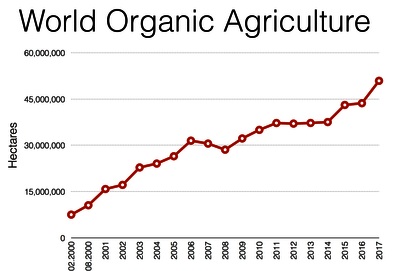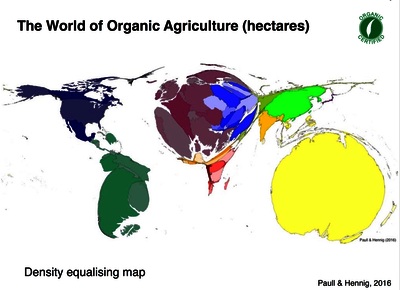Paull, John (2017) Four New Strategies to Grow the Organic Agriculture Sector. Agrofor International Journal, 2 (3), pp. 61-70.
Preview |
PDF
- Published Version
- English
Available under License Creative Commons Attribution. 253kB |
![[thumbnail of OA.world.data.Paull.jpg]](/32351/17.hassmallThumbnailVersion/OA.world.data.Paull.jpg)  Preview |
Image (JPEG)
- Published Version
- English
Available under License Creative Commons Attribution. 362kB |
![[thumbnail of OA.WorldMap.PaullHennig.jpg]](/32351/12.hassmallThumbnailVersion/OA.WorldMap.PaullHennig.jpg)  Preview |
Image (JPEG)
- Published Version
- English
Available under License Creative Commons Attribution. 431kB |
Document available online at: http://www.agrofor.rs.ba/paper.php?id=148
Summary in the original language of the document
This paper presents four new strategies for growing the organic agriculture sector. Globally there are 51 million hectares of certified organic agriculture land and a further 39 million hectares of wild culture land. For the past two decades organic agriculture has been growing at 11.9% per annum, thereby doubling the size of the sector every six years. Nevertheless, despite ten decades of advocacy for organics, only 1.1% of the world’s agricultural land is certified organic. From the outset, the strategy has been to advance the sector ‘one farm at a time’. This strategy has left the organics sector well short of the vision of the pioneers of organics who saw organic farming as a universal solution and a practice suited for all farmers and all agriculture. Successful exemplars of marketing strategies of converting ‘one consumer at a time’ remain elusive. Recent years have seen the development of new strategies for growth of the organics sector. The strategy of ‘one crop at a time’ has proved successful for the Dominican Republic which now produces 55% of the world’s certified organic bananas. The strategy of ‘one state at a time’ has seen the state of Sikkim (in India) declare itself as the first Indian organic state. Meanwhile, other Indian states are working towards all-organic status, including Mizoram, Goa, Rajasthan and Meghalaya. The strategy of ‘one island at a time’ has seen the Pacific islands of Cicia (in Fiji) and Abaiang (in Kiribati) commit to 100% organic farming. The strategy of ‘one country at a time’ sees Bhutan with the stated goal of being the world’s first organic nation. These new strategies rely for success on the tripartite cooperation of government, community and commerce. In the meantime, as these new strategies play out, only 11 countries report that 10% or more of their agriculture land is organic, while 111 countries report that less than 1% of their land is certified organic, which reveals great potential for new growth strategies.
Repository Staff Only: item control page

 Download Statistics
Download Statistics Download Statistics
Download Statistics
